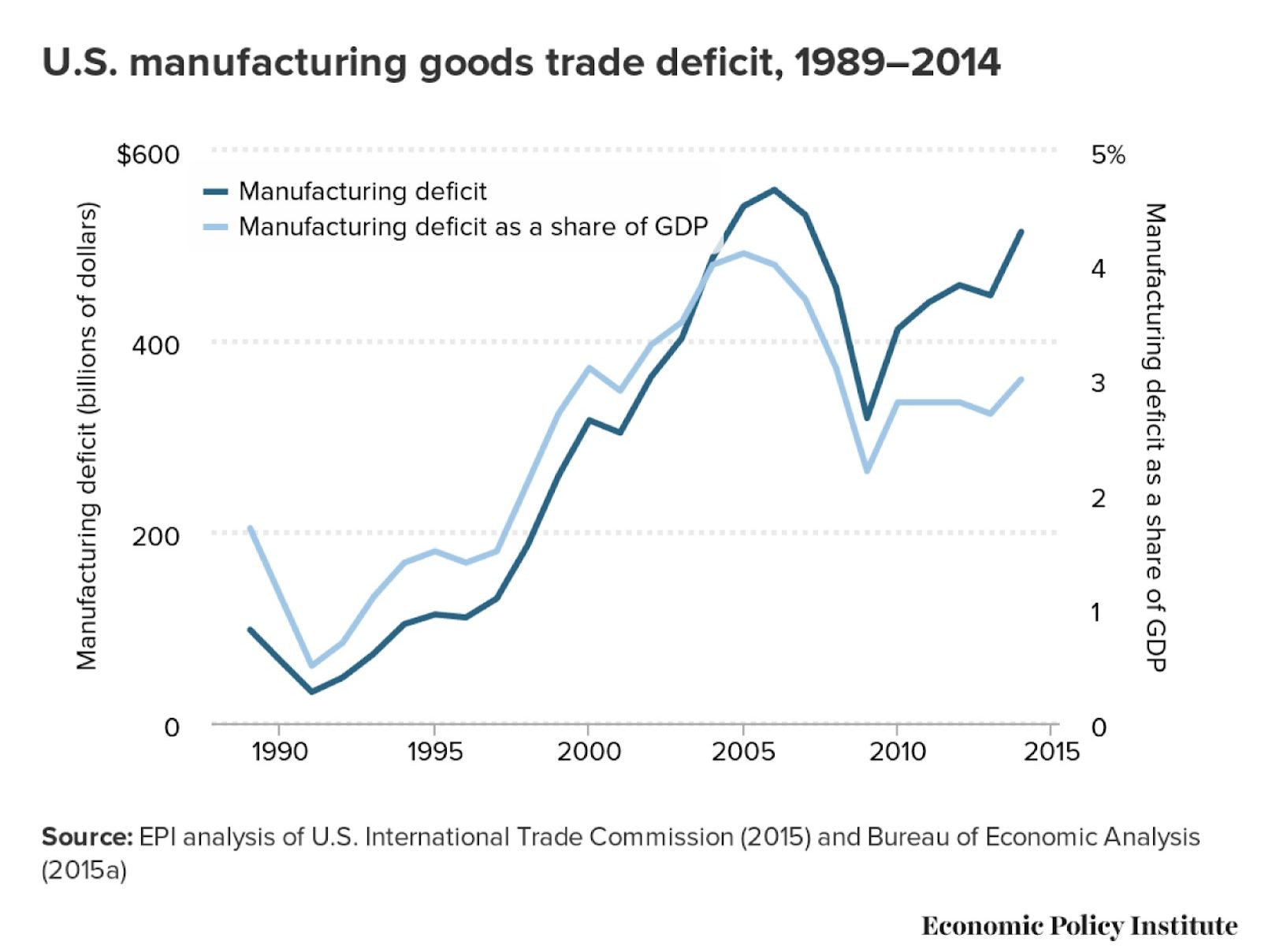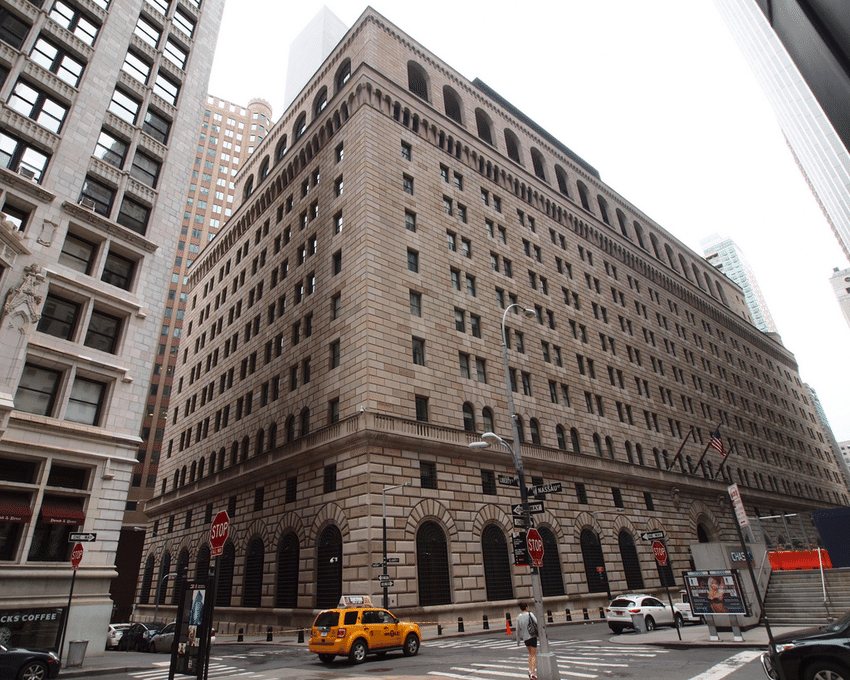
KAT BLESIE – NOVEMBER 22, 2018
The United States has often seen powerful people preaching the importance of working hard and staying busy. Our “bully pulpit” president Theodore Roosevelt once remarked that he’d rather risk wearing out than rusting out. Yet millions of people today find themselves at odds with this once uncompromised ideal of a steady, nine-to-five job that, for the baby-boomer generation, was all but guaranteed. The numbers speak for themselves, especially data from the manufacturing industry, a sector of the economy that is particularly useful to analyze because of the huge chunk that it has, historically, taken up of the U.S.’s economic pie. In the past 20 years the number of manufacturing jobs in the United States has dropped by almost 30%. Between 2000 and 2017 employment in manufacturing fell by 5.5 million jobs. Perhaps more surprisingly, the percentage of prime-age men who have no job and aren’t looking for a job has doubled since the 1970s—a statistic that suggests that our employment crisis is not just material in nature but psychological, as well.
Most economists agree that one of the leading propagators of this loss of U.S. jobs is the exponential growth of the use of technology in industry to increase efficiency and output. Economists have been nervous about technology’s effect on jobs for years—almost a century ago, in 1929, John Keynes warned that rapid technological change would reduce the demand for labor and lead to astounding rates of unemployment. Increasingly we see jobs that were once performed by humans being done by machines—cashiers have become ‘self-checkouts’, factory workers have been replaced (in some cases) by robots, and cars have begun to drive themselves. It’s true that technology makes jobs too—yet perhaps not at the rate that proponents of automation have advertised. 90 percent of workers today are employed in jobs that existed 100 years ago, and only five per cent of the jobs created in the twenty-year period between 1993 and 2013 came from high tech sectors. Researchers at Oxford university have predicted that, twenty years from now, machines may be able to perform half of all American jobs. The repercussions that America faces as a result of the decline in manufacturing run deeper than just unemployment—in many of the areas that were once hubs of industry we can now observe a surge of opioid use and opioid related deaths.
Of course technology isn’t the only threat impinging on US employment. In the realm of manufacturing, especially, recent economic analysis has shown that trade deficits might actually shoulder much of the blame for manufacturing job loss. The US Census Bureau reported in 2015 that the U.S. has run a goods trade deficit in every year since 1974, and with more than 75% of U.S. traded goods being manufactured goods, it’s manufacturing jobs that are taking the hit.

An interesting sub-group of scholars and economists has surfaced (or resurfaced) in the past ten years which argues that the end of jobs, for lack of a better phrase, might not actually be a bad thing. One such thinker, Peter Frase, says that we are conflating the way in which we earn income with the activities that give our life meaning. Frase, along with a select few, actually encourage the end of labor. Benjamin Hunnicutt, a historian at the University of Iowa, believes that America has an irrational belief in work for work’s sake. “Purpose, meaning, identity, fulfillment, creativity, autonomy—all these things that positive psychology has shown us to be necessary for well-being are absent in the average job.” This may all very well be true – but people need to eat, don’t they? Most jobless people today aren’t relishing in their newfound freedom to do meaningful, creative things—they are worrying about where their next meal will come from, and how they will pay their bills. Frase and his contemporaries are not the first to champion the cause of a leisure driven future—acclaimed 20th century philosopher and social critic Bertrand Russell argued in his essay, In Praise of Idleness, that since the industrial revolution humans have theoretically been able to live with labor taking up a much smaller proportion of their lives than it does. In his words, “only a foolish asceticism, usually vicarious, makes us continue to insist on work in excessive quantities now that the need no longer exists”. These arguments are based on a viable—if not wildly optimistic—premise: why shouldn’t recent advancements in technology be used to shift the labor force, instead of replacing it? Why are we so scared of automation? What causes the cultural majority to identify more with the 19th century Luddite than the 21st century technocrat?
Well, perhaps it is the fact that the four most common jobs in American today (salesperson, cashier, office clerk, and food server) are all jobs at risk of being replaced entirely by automation. Some economists now argue that our increasingly inequitable wage structure has technology to thank. Prior to the 20th century, technology introduced to the labor market was actually relatively unbiased with respect to skill level—in fact, the major technological invention of “interchangeable parts” that arose in the 20th century put mainly skilled artisans out of work. So why do we see such a heavy skill bias in technology today? Many economists agree that rising returns to education and an increase in the supply of educated workers has caused this skill bias in technology. As MIT economist Daron Acemoglu writes, if we weren’t facing a skill bias then the aforementioned increase in supply of skilled labor would have depressed the skill premium. Instead, we’ve seen the relative demand for skilled labor rise. Acemoglu emphasizes that we should view technology as an endogenous factor—an outcome of decisions made in industries, rather than an outside force acting on the labor market. This in turn suggests that the increased skill bias of technology in the past 40 is a result of the increase in the supply of skilled workers that came about, in part, because of an increased Vietnam-era push for increased participation in higher education. Why? Because technical change moves towards more profitable areas. Profitability is determined by the price effect and the market size effect. As Acemoglu writes, ceteris paribus, it is most profitable to introduce capital that will be used by a larger number of workers, and, as a consequence of this, a labor market with a high proportion of skilled laborers makes the production of “skill-complementary” machines and technologies highly profitable,
Policy makers, heads of state, and others with a significant say in the direction of our economic policies acknowledge that many workers fear that they won’t have a job in a month, or a year, or a decade. In our most recent presidential race we saw the winning candidate run on a platform which focused, in part, on re-invigorating the automobile manufacturing industry (an industry in which jobs took a huge hit, in large part due to automation). Economic research institutes, perhaps with less self-motivated interests, have also highlighted increasing automation as a problem area of interest. McKinsey Global Institute, in a 2017 executive briefing, proposed several potential steps to take in our increasingly digitized and automated world. They included implementing a universal basic income, improving STEM learning in young children, and incentivizing corporations to treat human capital like they would any other capital. It remains to be seen if, and to what degree, technological innovation will widen the gap between skilled and unskilled workers, although if returns to education continue to increase, and Acemoglu’s analysis proves correct, it seems likely that technology will continue to put lower-skilled jobs at risk of replacement.
Featured Image Source: New Statesman
Disclaimer: The views published in this journal are those of the individual authors or speakers and do not necessarily reflect the position or policy of Berkeley Economic Review staff, the UC Berkeley Economics Department and faculty, or the University of California, Berkeley in general.



